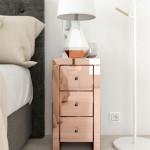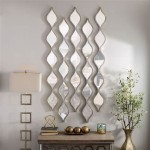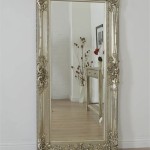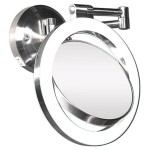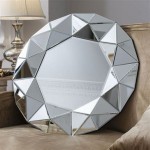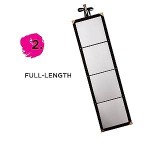Two-Way Mirror: A Comprehensive Guide
A two-way mirror, also known as a one-way mirror or half-silvered mirror, is a specialized type of mirror that allows viewing from one side while appearing reflective on the other. This unique property arises from the precise application of a metallic coating, typically a thin layer of silver or aluminum, onto a glass surface. The coating is applied in such a manner that it reflects approximately half of the incident light and transmits the other half. This delicate balance is crucial for the mirror's distinctive functionality.
Key Properties of Two-Way Mirrors
Several key properties define the functionality of a two-way mirror:
- Partial Reflectivity: Reflects approximately 50% of light.
- Partial Transmittance: Transmits approximately 50% of light.
- Light Level Differential: Operates most effectively when the observation side is significantly darker than the mirrored side.
The Science Behind Two-Way Mirrors
The principle behind a two-way mirror relies on the physics of light reflection and transmission. When light strikes the mirror's surface, a portion of the light is reflected back, creating the mirror image. The remaining light passes through the mirror. This phenomenon is dependent on the thin metallic coating, which allows for both reflection and transmission. The specific percentages of reflection and transmission can be adjusted by varying the thickness of the metallic coating. A thicker coating results in higher reflectivity, while a thinner coating increases transmittance.
Achieving the Two-Way Effect
The "two-way" aspect is achieved through careful manipulation of lighting conditions. The observation side must be considerably darker than the mirrored side. This light differential is critical for the effect to work. In a brightly lit mirrored room, individuals see their reflection because the reflected light is significantly stronger than the light transmitted from the darker observation room. Conversely, in the dim observation room, the transmitted light from the brighter room dominates, allowing observers to see through the mirror.
Common Applications of Two-Way Mirrors
The unique characteristics of two-way mirrors lend themselves to various applications:
Security and Surveillance
Two-way mirrors are frequently employed in security and surveillance settings. They allow unobtrusive observation of individuals without their knowledge. This can be beneficial in retail environments for loss prevention, in law enforcement for interviews and interrogations, and in research studies for observing behavior without influencing participants. The covert nature of observation provided by two-way mirrors makes them invaluable tools in maintaining security and gathering information discreetly.
Entertainment and Illusions
Magic shows, theatrical productions, and art installations often incorporate two-way mirrors to create illusions and special effects. The ability to seemingly appear and disappear, or to create phantom images, adds an element of mystery and intrigue to performances. The manipulation of light and reflection allows for creative visual manipulation and enhancement of audience experience.
Scientific Research and Teleprompters
Scientific research, particularly in psychology and animal behavior studies, utilizes two-way mirrors to observe subjects without interference. Additionally, teleprompters utilize the partially reflective surface to project text onto the glass while allowing the presenter to see through it and maintain eye contact with the audience. This facilitates a seamless delivery while appearing natural and unscripted.
Identifying a Two-Way Mirror
Distinguishing a two-way mirror from a regular mirror can be challenging. Here are some methods to help identify a two-way mirror:
The Fingernail Test
One commonly used method is the fingernail test. Place your fingernail against the surface of the mirror. If there is a noticeable gap between your fingernail and its reflection, it is likely a regular mirror. If the reflection appears to touch your fingernail directly, with minimal or no gap, it may be a two-way mirror. However, this method is not foolproof and should be used in conjunction with other methods for greater certainty.
Observing Lighting Conditions
Observing the lighting conditions on both sides of the mirror is a crucial indicator. If one side is significantly brighter than the other, it increases the probability of it being a two-way mirror. The significant light differential is necessary for the two-way effect to function properly.
Sound Test
Sound travels relatively easily through two-way mirrors due to their thinness. Lightly knocking on the surface and listening for the sound can be indicative. If the sound seems hollow or amplified, it could suggest a two-way mirror, potentially concealing a space behind it. This method, while helpful, should be used with caution and in conjunction with other identification techniques.
Legal and Ethical Considerations
The use of two-way mirrors raises important legal and ethical considerations, particularly regarding privacy. It is crucial to be aware of and comply with all relevant laws and regulations regarding surveillance and privacy in the jurisdiction where the mirror is being used. Transparency and informed consent are paramount when employing two-way mirrors for observation, ensuring ethical practices and responsible use of this technology.

How A Two Way Mirror Works

How To Tell If A Mirror Is Two Way Or Not Quora
How To Tell If A Mirror Is Two Way Or Not Quora
How To Tell If A Mirror Is Two Way Or Not Quora
How To Tell If A Mirror Is Two Way Or Not Quora
How To Tell If A Mirror Is Two Way Or Not Quora

What Is A Two Way Mirror

What Is A Two Way Mirror

What Is A Two Way Mirror

High Definition Cs Double Sided Mirror Hu Friedy

